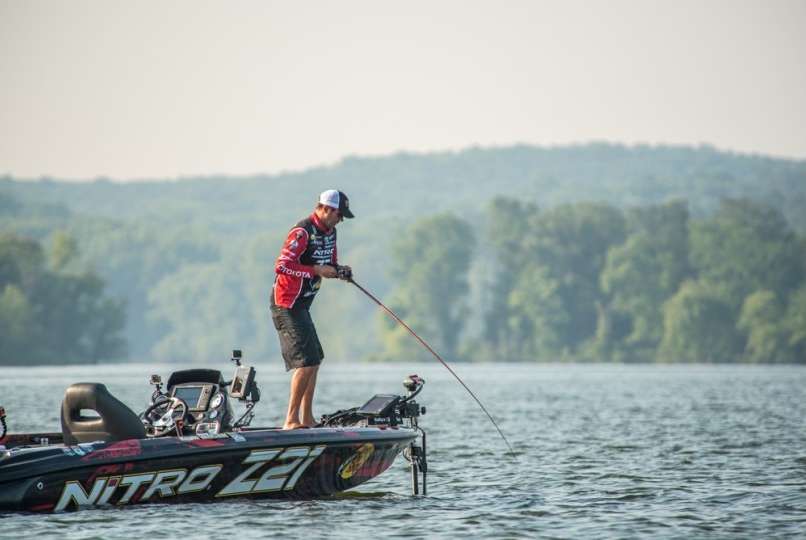
If you’re currently using older electronics you really should consider upgrading to today’s newer technology.
It would be difficult for anyone to compete on today’s tournament circuits without the modern day features that electronics now offer. They are an integral part of what I do, but you don’t have to be a pro angler to benefit from them.
The features you find on today’s units are far superior to those that we used five years ago. Here’s a look at what you might be missing:
Sharp, full color screens: You no longer have to spend a fortune to get a picture perfect screen that you can see in bright sunlight. Each of the units in the Humminbird Helix Series can be viewed without problem and the detail is incredible.
Side imaging: This is one of the biggest advancements in fish finders and one I use every day while practicing for a tournament. I have discovered structural elements that I didn’t know existed on lakes that I’ve fished for years.
You can enhance the image of objects marked away from the boat by keeping the scan distance to 75 feet or less. You’ll get more detail and see things more to scale than what you do when scanned beyond 100 feet. Scanning closer also allows you to differentiate objects that are close together, like fish suspended in a tree or bush.
Mapping: Most electronic maps utilize old cartography designed decades ago. Humminbird invested a ton of resources to remap some of the best lakes in the country when it created the Lakemaster map chip. The new maps are incredibly accurate and show things that previously were unknown.
For example, when I won at Toledo Bend this year, Lakemaster had just added the lower end of the lake. There is no way I could have won that tournament without the new detail I saw on that map. I saw so much structure in the way of ditches, dips, turns on what we previously believed was a flat bottom. That chip led me to the winning pattern.
GPS accuracy: When you find a brush pile on side imaging, you can move the cursor on it and drop a waypoint without having to drive on top of it. The next time you fish it, you will know the exact distance and direction it is from the boat.
Versatile sonar: If you’re uncertain as to what the marks are that appear on standard 2D sonar, flip to down imaging and you’ll see precisely what is there.
The sharpness of 2D and DI makes it possible to see a bass on the screen and put a drop shot bait right on its nose and catch it.
It doesn’t matter whether I’m ledge fishing on Kentucky Lake or smallmouth fishing on the Great Lakes, I keep my eyes glued to the screen and always have a bait ready to drop to a fish I see beneath me.
In some fishing situations, I will employ 360 Sonar – yet another transducer that scans off the trolling motor shaft and looks ahead of the boat for structure and fish. I’ll split the screen on my graph to show side imaging, down imaging 360 and 2D sonar, providing me images from beneath and around the boat.
You can learn about today’s great features and how to get the most from them at various websites and on YouTube where videos illustrate how to benefit from new electronics.
Now is a good time to start researching the new units and shop for the best deals so you can make those upgrades before next spring.
It’s all about the attitude!
Kevin VanDam’s column appears weekly on Bassmaster.com. You can also find him on Facebook, Twitter and Instagram.

